Praising Fellow Home Developers
by NorseGamer, HSM Publisher
Recently, Mike Shillingford — who coordinates Lockwood community management with our own Melissa Rumery — recently inquired about where Lockwood followers get their Home news from. Feeling a bit cheeky, I sent in HomeStation’s audience numbers from Google Analytics.
We don’t have anything left to prove — as far as we can measure, HSM appears to be the third largest Home media site in the world (plus we don’t pay for any of our traffic or play other metrics manipulation games), and that’s before you take into account the massive audience exposure we have in Home itself via the SCEE News Reader and LOOT EOD. If you take our in-Home footprint into account, I would contend that the only Home media outlet larger than HSM would be our sister site, AlphaZone 4 — because AZ4 is just freaking huge. I’ve seen Jamie’s audience numbers. Nothing’s ever going to touch what he pulled off.
But this got me to thinking about HomeStation’s greatest strengths and challenges. In the case of HSM, we have several competitive edges: daily long-form content output, strong product quality, and — critically — coverage of subjects a bit deeper than just PR copypasta of the latest weekly product launches. In particular, the two areas where we excel as a publication are the quality of our developer interviews and the strength of our business analysis articles, especially those dealing with behavioral economics.
 The catch, though, is that the majority of those analysis pieces — which drove a staggering amount of traffic, because no one else in the Home media scene was satisfying this demand — were written by Melissa and I. But once you become a Home developer, you basically can’t write that kind of article any more. Leaving aside the very real issue of NDA legal prohibition, it’s essentially impossible to pretend you don’t know the actual answers to the questions you’re posing.
The catch, though, is that the majority of those analysis pieces — which drove a staggering amount of traffic, because no one else in the Home media scene was satisfying this demand — were written by Melissa and I. But once you become a Home developer, you basically can’t write that kind of article any more. Leaving aside the very real issue of NDA legal prohibition, it’s essentially impossible to pretend you don’t know the actual answers to the questions you’re posing.
So this aspect of HSM journalism largely fell silent. Fortunately, the already outstanding HSM team stepped up to the plate and remade the publication’s content mix in their own image. But this raises a question: what else can we do here at HomeStation that no one else can do?
That’s when it hit: has any Home developer ever published an article where he talks about fellow Home devs from other studios?
To my knowledge, this hasn’t been tried before. And there’s a reason for this: generally speaking, when you work for one studio, you don’t come into regular contact with peers at a fellow Home studio, save for the occasional DevNet forum discussion. But since I was in the Home journalism scene for a couple of years before becoming a developer, I got to know a lot of different people across a spectrum of studios. Which kinda puts me in a unique position to write something like this.
Keep in mind, before we get underway: if you don’t see your studio’s name in the body of the article below, don’t take it as a silent slam or somesuch; it simply means I haven’t had enough in-depth contact with you yet to be able to write about you in this context. Home developers are, overall, a pretty cool fraternity.
Hell, we might as well start with the big one.
One of my favorite video game slogans comes from Richard Garriott’s Autoduel: “The right of way goes to the biggest guns.” And in Home, it’s pretty hard to find a third-party developer with a larger consumer-facing presence than Lockwood. It’s a pretty safe bet that my personal Home account has more Lockwood virtual goods than any other studio (yes, I own a crap-ton of LOOT gear, but we’re talking economy of scale here — Lockwood’s product output in Home is staggering, which increases the odds of finding something you want to buy), and I’ve made no secret of being something of a Lockwood fanboy.
I won’t regurgitate the tens of thousands of words I’ve written about Lockwood over the years. Suffice it to say that when it comes to the Home business model, they do damn near everything right. They’ve built a reputation of being just a little bit better at every market segment in Home — and have even gone so far as to invent one or two along the way.
It can be argued that they might have an unfair advantage because they’re a (comparatively) large Home studio, but that also means that they have a lot more mouths to feed. Besides, Lockwood hired Melissa to help with community management, which officially makes them awesome-times-ten at HSM, and they even published an HSM contributor’s VICKIE origin story in Home itself via the Gift Machine, anointing it as officially canon. Lockwood was also the very first developer to sign on in support of HSM, back in the early days when a lot of doors were closed to us, and for that this publication owes a debt which can never be fully repaid.
Lockwood’s major post-Home venture is their own proprietary social MMO, Avakin, which is built in Unity. If you feel like exploring it — and you should — then go to their website for more, or reach out to Mike or Melissa. Avakin recently passed one-million downloads, and its growth rate is quite remarkable.
One quick note about Lockwood, by the way: never challenge Joel on environmentalism (you’ll lose), and never challenge Halli on chess (you’ll lose harder).
These guys are the Terry Gilliam surrealists of PlayStation Home, and it’s hard to argue with their success or their inventiveness. I suspect nDreams will always carry a special place in a lot of Home users’ hearts because of Xi, but let’s not forget the many other commodities and experiences they’ve delivered. (In particular, Los Penguini Brothers is horribly underrated.) nDreams has this wonderful fearlessness about taking chances — seriously, who else would’ve thunk up with Thing in a Box? — and I love the fact that they try to push the boundaries of what your brain can accept in virtual reality. Aurora alone is proof enough of that.
(For one thing, who else but nDreams could’ve pulled off something as ambitious as Blueprint:Home? To me, that’s still one of the coolest, most under-utilized Home experiences out there.)
Patrick’s officially made of win for hiring Jamie, by the way. Jamie’s one of the smartest damn computer brains I’ve ever met (I mean, come on, he’s only architected two of the largest Home media sites in the world for fun, and wrote Facebook Chess before he was old enough to drive), to say nothing of being one of the most understated people I know.
When you’re in a room with a bunch of people and Jamie’s in the room with you, the odds are pretty good that Jamie’s probably the smartest guy in that room.
nDreams always has something going on — most recently, one of their post-Home ventures was the Oculus Rift game, SkyDIEving — and their new website, VR Focus, looks to be rather interesting. Reach out to Joe Dale (who is legit awesome, and knows how to play golf) if you want to learn more.
Here’s the thing about Digital Leisure: they might just possibly be, in terms of ROIC, Home’s biggest third-party success story. For some reason you might not think they’ve got a big footprint in Home since they’re primarily known for “just” the Western Village and the Casino (and the Aquarium, and the — oh, you get it), but in terms of return on invested capital, they’ve silently gone about raking in the money. Back when SCEA was still revealing its monthly sales lists, Digital Leisure’s chips were constantly atop the sales rankings. In Home your successes need to also pay for the money you put into your failures, but when it comes to DL’s product lineup, they’ve served up plenty of aces. (I absolutely love my Dirk the Daring sword, by the way.)
 What I really dig about Digital Leisure is not just the calm intelligence with which they go about their work — they study the Home marketplace and very surgically pick where to invest their money and what features to promote to drive user engagement — but the obvious enthusiasm they have for it. I’ve been fortunate enough to chat with David and Paul several times, and what’s always impressed me is that while business needs must always come first and foremost, there’s always that driving curiosity to find out what people like.
What I really dig about Digital Leisure is not just the calm intelligence with which they go about their work — they study the Home marketplace and very surgically pick where to invest their money and what features to promote to drive user engagement — but the obvious enthusiasm they have for it. I’ve been fortunate enough to chat with David and Paul several times, and what’s always impressed me is that while business needs must always come first and foremost, there’s always that driving curiosity to find out what people like.
I know that sounds kinda obvious, but it’s an important point. Never get so wrapped up in what you want to sell that you forget what people are willing to buy. It’s an all-too-common mistake. One which, insofar as I’ve seen, Digital Leisure has avoided.
By the way, that asymmetrical marketing tactic of periodically altering the free hotel room estate with one calamity after another? Absolutely brilliant. And now that I’ve gone through the process of getting a scene submitted and published in Home, I know how much work goes into that. Massive applause.
What isn’t to love about these guys? Back before Home went on its quest to reinvent itself as a full-blown gaming platform — hell, back before Home even had multiplayer APIs — Hellfire blew the doors off by introducing Novus Prime, which was Home’s third major game IP as well as its first truly multiplayer game. Then, as if that wasn’t enough, they rocked Home again by rolling out Home Tycoon — a game which I will happily eat my words on, because it’s gone on to become one of Home’s true success stories, even going so far as to have a PlayStation Plus tie-in.
 One of the funniest moments I’ve ever had in Home was chasing a bear in a convertible through my city. For some reason, that kind of cool absurdity sums up Hellfire for me: they’re the guys who built a game that lets you chase a bear driving a convertible. (Hey, it got $60 out of me, and most AAA console titles can’t do that.)
One of the funniest moments I’ve ever had in Home was chasing a bear in a convertible through my city. For some reason, that kind of cool absurdity sums up Hellfire for me: they’re the guys who built a game that lets you chase a bear driving a convertible. (Hey, it got $60 out of me, and most AAA console titles can’t do that.)
Here’s the thing about Jeff, Ben and the Hellfire guys: they’re the kind of people you’d want to hang out with and have a few drinks. And I don’t drink, so that’s saying something. Seriously, they’re just cool dudes. Jamie, Melissa and I have had the good fortune to kick back with these guys in LA a couple of times, and every time it’s the same reaction: not only are these people serious fans of Home, but they’re the kind of people you want to go see a GWAR concert with.
Craig and the guys up in Scotland are certifiably mental — but in that awesome, Contra spread-shot sort of way. SCEE users tend to have far more awareness of them than SCEA users — despite the tremendous amount of content they’ve produced for Home — but their influence is quite large on both sides of the pond.
There are a few things I really like about VEEMEE. The first — and I’m sorry, but I will brook no argument on this — is that No Man’s Land really is one of Home’s best games. At E3 2012, it was the one aspect of Home that SCEA had on display in the PlayStation area (as well as at IndieCade), and you’d have been amazed how many people came away from it, legitimately impressed, saying, “That’s a Home game?”
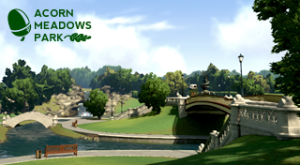 The second thing I like about them is that they anticipated Home’s returned emphasis to a social platform instead of a gaming platform, and with absolutely perfect timing (and no small measure of invested cost), released Acorn Park into Home. Keep in mind — VEEMEE’s done a lot of stuff in Home, including work that’s not overtly consumer-facing — and they’ve been on an absolute tear through the Home marketplace recently.
The second thing I like about them is that they anticipated Home’s returned emphasis to a social platform instead of a gaming platform, and with absolutely perfect timing (and no small measure of invested cost), released Acorn Park into Home. Keep in mind — VEEMEE’s done a lot of stuff in Home, including work that’s not overtly consumer-facing — and they’ve been on an absolute tear through the Home marketplace recently.
The other thing about VEEMEE that’s awesome: they’re far more engaged with what’s going on in the Home scene — including its various community outlets — than anyone gives them credit for.
You will be hard-pressed to find a more hardcore true believer in PlayStation Home than John Ardussi. Seriously, this guy bleeds Home. Remember when any behind-the-scenes information about Home was harder to obtain than a peek at the gold inside Fort Knox? It was in that environment that HSM published an approved interview with John, back when he was leading Sony’s development group within VASG that wrote the code for active items, spaces and mini-games, as our fifth issue’s cover story. You can imagine the spike in traffic that caused.
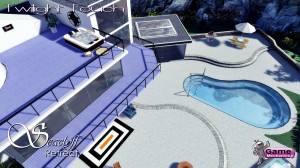 John’s most prominent contribution to Home is probably his work on creating Cutthroats, which can make a legitimate claim to possibly being the game that best utilizes the Home platform. That said, his current work under the Game Mechanics banner is also highly impressive. In particular, the SeaClyff Estate is one of the most technically ambitious estate scenes ever released into Home. And, more importantly, it was a fiscal success, further proving the point that Home is a power-law distribution economy. It also features artwork murals from multiple HSM contributors, which is simply too cool.
John’s most prominent contribution to Home is probably his work on creating Cutthroats, which can make a legitimate claim to possibly being the game that best utilizes the Home platform. That said, his current work under the Game Mechanics banner is also highly impressive. In particular, the SeaClyff Estate is one of the most technically ambitious estate scenes ever released into Home. And, more importantly, it was a fiscal success, further proving the point that Home is a power-law distribution economy. It also features artwork murals from multiple HSM contributors, which is simply too cool.
The new Game Mechanics project, The Hat Man, looks like a really cool (and more than a little scary) game. Following a successful Kickstarter campaign, they’re currently trying to get the title onto Steam. Support the effort here if you like the game.
My initial summation of Juggernaut’s methodology still holds true today: when in doubt, roll in a grenade and come in firing.
No one had heard of Juggernaut when they initially exploded onto the Home scene with the superlative Cutteridge Estate. Remember when there were very serious discussions about whether or not a “premium” $6.99 price tag was justifiable? Frankly, the only criticism anyone could make about it today is that Juggernaut probably left money on the table by being way too generous with their pricing strategies.
 Here’s what I really like about George and his gang down in San Diego: to borrow somewhat from Joe Straczynski, they’ve got a certain “mammals with guns and an attitude” underdog swagger to them. And they have the skill to back it up. It can be argued that no third-party developer has done more for innovation with active items than Juggernaut. I think I’m correct that they were the first developer to offer active furniture (a table and chairs, for instance) that took up less memory slots than individual equivalent pieces. Further, their “Essence” superpower lamps have got to be some of the coolest innovations ever dreamt up for a personal estate. And let’s not forget MiniBots, which was an entire third-person shooter crammed into an active item.
Here’s what I really like about George and his gang down in San Diego: to borrow somewhat from Joe Straczynski, they’ve got a certain “mammals with guns and an attitude” underdog swagger to them. And they have the skill to back it up. It can be argued that no third-party developer has done more for innovation with active items than Juggernaut. I think I’m correct that they were the first developer to offer active furniture (a table and chairs, for instance) that took up less memory slots than individual equivalent pieces. Further, their “Essence” superpower lamps have got to be some of the coolest innovations ever dreamt up for a personal estate. And let’s not forget MiniBots, which was an entire third-person shooter crammed into an active item.
Forget “out of the box” thinking. Juggernaut doesn’t even know where the box is.
The other thing I really like about Juggernaut: the candor and depth of their interview answers. HSM prides itself on its developer interviews (seriously, know any other Home fansite that’s interviewed people like Richard Garriott, Ralph Baer and James Arnold Taylor?), and Juggernaut consistently gives interesting answers that are deeper than the usual PR milquetoast.
(Offhand, I wonder if Jamie ever tried Bramblenook Farm. Juggernaut’s released the closest thing to Harvest Moon that Home’s likely to ever see.)
Juggernaut’s latest project, StarCrawlers, is having a very successful Kickstarter run. Support their cause here.
SONY VASG
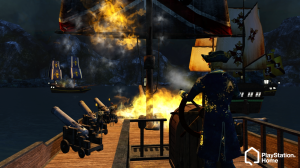 If you’ve followed HomeStation over the years, then you know that I have an uncompromising belief which ideologically drives this publication: if you bring a problem, you must bring a solution. Fanboy ranting doesn’t cut it here; you must constructively criticize if you are to have any hope of actually effecting change.
If you’ve followed HomeStation over the years, then you know that I have an uncompromising belief which ideologically drives this publication: if you bring a problem, you must bring a solution. Fanboy ranting doesn’t cut it here; you must constructively criticize if you are to have any hope of actually effecting change.
This belief hasn’t always made me the most popular person with the fringe elements of the community that are vocally disenfranchised. But the results speak for themselves.
In particular, something I’m personally grateful for was the invitation given to me by Mike Mumbauer, at Sony VASG, to help offer input into Cutthroats 2.0 at their offices in San Diego — which stemmed from an analysis of the original game’s flaws, published here at HSM. For a Home fan, to be able to actually get some hands-on time with the HDK and help in some small way to create a Home game is basically as good as it gets. It was a great peek inside how things work, and I’m very grateful to Mike for that.
There’s also an important reminder here, which you’ve seen repeated a few times throughout this article: be mindful of what you say. Developers pay attention. Your words are a tool, and any tool should be used appropriately in order to achieve the desired result.
SCEE
Simply great people. Sara and Simon at HPG have been enormously supportive of HomeStation, and it’s thanks to them that HSM had the honor of being the first Home community media outlet to be featured in HPG’s Media Reader, thus exposing our team to the entire SCEE Home user base. Let’s face it: if you’re a Home fan, getting to interact with people at HPG like Sara, Simon, Natalie, Thom, et al is a huge dollop of awesome (particularly since Sara likes cats, and as we all know, cats are our overlords). Same goes for the great people at SCEE I’ve interacted with in my LOOT role — Mark, Andy, Angela, and more. A lot of very talented people work behind the scenes, away from the public spotlight, to keep Home going, and if you think your engagement level with the platform is high, trust me: theirs is higher.
(Trivia: I once indirectly got a very big compliment from Peter Edward about something I’d done that was Home related. Not really sure I can publicly disclose what it was, but needless to say, that’s one of those epic-win moments that has its own Final Fantasy victory fanfare.)
SCEA
I’ve been lucky enough to hang out with the SCEA Digital Platforms guys involved with Home — both those who are community facing and those who are behind the scenes — more than a few times, plus interact with them in an official capacity for various LOOT projects, and seriously, they’re just the best. Jack, Matt, Paul, Nathan, Eric, Jason, Sean…the list goes on. Home is a many-headed beast, and these guys work their tails off with every tool that’s available to make it as fun and enjoyable as possible for the user base.
)
In particular, something I want to point out: you have no idea how logistically complicated it is to keep Home going. No one’s ever tried a console-based social MMO with, what, four-dozen different developers all contributing content? And let’s not forget that all of this has grown, like some farrago coral reef, from a PS2 concept that started its closed beta back in 2007. Sometimes it ain’t pretty and sometimes it takes some duct tape, but it really is remarkable how it’s continued to flourish.
Wrapping it up with where I currently am. LOOT.
If you’ve watched the reinvented LOOTcast series, then you’ve already seen the office environment. It’s crazy. It’s insane. It’s bleeping awesome. The window panes in the buiding rattle with our laughter. We’re this little black ops skunkworks team in the middle of the Sony Pictures lot, with the Breaking Bad winnebago parked outside our offices.
In terms of virtual goods released into Home, LOOT isn’t the biggest player out there. But in terms of impact, LOOT’s footprint is huge. The holy trinity of the EOD, Crackle and RadioIO by itself effectively serves as a tremendous value-add to the Home user experience, and it’s the sort of thing that frankly only LOOT could pull off. And the tie-ins with major IPs — Ghostbusters, Men In Black, Doctor Who, etc. — really do help make Home feel more connected to the outside world.
On a personal level, it’s more than that, though. LOOT gave me a chance.
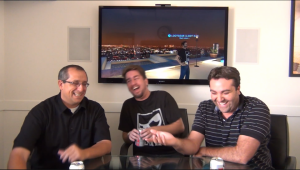 Here’s the thing: even though I’ve got a decade of resort development experience (including being concurrently responsible for sales operations at two full-service resorts with a $72M budget), two college degrees and a certification as a Gallup Strengths Coach, there’s always that question mark of how well skills from another industry will translate into video games. CV aside, as far as anyone in the games industry was concerned, I could just be another loudmouth fan blogger.
Here’s the thing: even though I’ve got a decade of resort development experience (including being concurrently responsible for sales operations at two full-service resorts with a $72M budget), two college degrees and a certification as a Gallup Strengths Coach, there’s always that question mark of how well skills from another industry will translate into video games. CV aside, as far as anyone in the games industry was concerned, I could just be another loudmouth fan blogger.
LOOT gave me a chance.
David, Danilo, Prateek, Rich and the team — they took a chance on a guy they’d only met in person twice, who lived on an outer island in Polynesia and spent his free time analyzing virtual economies. Which, by the way, is why I work such ridiculous hours at the office: because I’m acutely aware of just how lucky I got.
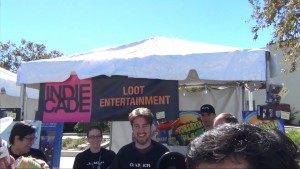 These days, the majority of my work is outside of Home, since LOOT’s PlayStation apps demand so much time. In my freshman year, I’ve been the producer on our PlayStation apps for Major League Baseball, the National Hockey League, the NBA (for Sony Blu-Ray devices), Crackle, Gaiam, and some stuff that hasn’t been released yet. At the same time, within Home, I handled the production coordination for our 2013 projects: Doctor Who(!), Hollywood Hills House Nighttime, Men In Black locomotions, Forsaken Planet locomotions, RadioIO rental passes, et cetera. And I get to produce the company’s dev diary series! Best part is, the sophomore year looks crazier. Hell, I’ve even written a formal game design document….
These days, the majority of my work is outside of Home, since LOOT’s PlayStation apps demand so much time. In my freshman year, I’ve been the producer on our PlayStation apps for Major League Baseball, the National Hockey League, the NBA (for Sony Blu-Ray devices), Crackle, Gaiam, and some stuff that hasn’t been released yet. At the same time, within Home, I handled the production coordination for our 2013 projects: Doctor Who(!), Hollywood Hills House Nighttime, Men In Black locomotions, Forsaken Planet locomotions, RadioIO rental passes, et cetera. And I get to produce the company’s dev diary series! Best part is, the sophomore year looks crazier. Hell, I’ve even written a formal game design document….
But what I keep in the back of my mind, even with all the cool new stuff coming up: I’m the PlayStation Home fan who got to be a PlayStation Home developer. That’s how I got my start in this industry. And you can count on one hand the number of people in all of Home who share that success story — three of whom (myself, Melissa and Jamie) have ties to this publication. For Jamie, it’s nDreams. For Melissa, it’s Lockwood.
And, for me, it’s LOOT.
)
There have been some really fun cross-developer interactions in the last year. Home’s fifth anniversary party. An impromptu get-together of Home developers during last year’s E3. And it’s worth noting that Home still has mileage left in it, as evidenced by the 1.86 update that introduced trophy support. As developers, we’re all generally rooting for each other to succeed.
You might be thinking, as you read through this, that this is all the same stuff I’ve said here at HSM in previous articles. And you’d be right. Except that this time I’m saying it as one developer to another. You guys are awesome, and next time you’re in town, drop by the Sony Pictures lot and let’s hang out.
Share
| Tweet |




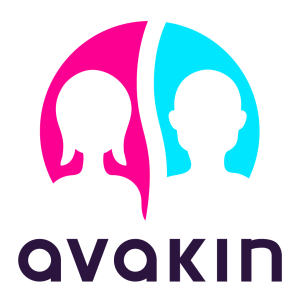
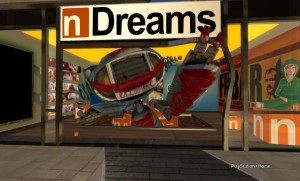
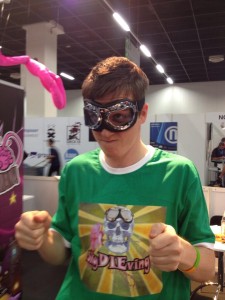

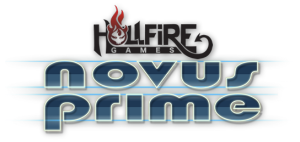
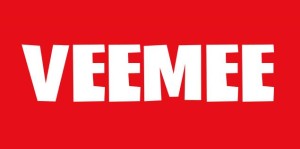
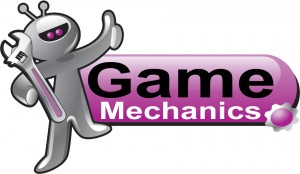
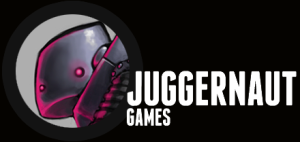
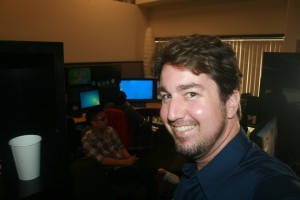


 LinkedIn
LinkedIn Twitter
Twitter
Ace article Norse! Loved reading your experiences with the different Home devs
If anyone wants to get in touch with me about Avakin or PS Home stuffs -- you can get me on contact@lockwood-studios.com. Would love to make contact with some fellow dev CMs too
LKWD_Mike
Hey Mike, I’m the CM for Atom Republic. Here’s me contacting you! I’m pretty new to this, and I’d be glad to hang out any time. Feel free to contact me at atomrepubliccommunitymanager@gmail.com
Thanks so much for the kind words, Norse! Right back at ya, and cheers to all the other Home devs. Passing this article around the studio today.
What an interesting article Norse, very nicely written. I was just researching for my Atom Republic CM job and I ran across this article which was extremely helpful and quite informative! You writing this article now couldn’t have been better timing for me as a person that hasn’t kept up so much on all the developer’s, and now appreciates this information.
I always enjoy reading your articles though, because they are so intellectually informative (I hope that doesn’t sound…hokey…LOL…but it is refreshing to read articles that assume the reader’s are looking for more sharp-witted writing, which is quite rare in this genre, IMO.)
Anyway, good job!
Congrats on the CM appointment with Atom Republic, by the way! Tanguy gets a round of applause from HomeStation for appointing you to the role.
Hey Boxer Lady! Congrats on your new position at atom Republic!
I first approached HomeStation Magazine because at the time it seemed to be the eye in a storm. To Jason’s credit, he created something that I wanted to contribute to. And luckily, Sony approved. My goal was to direct people to issues that were likely to get solved with pressure from the outside. I can tell you that when the Home Core Team said 2 Active items per apartment, they could live with that. It was only public pressure and a few suggestions on how it might be done that made it happen. And none of that would have happened if Jason had not created a platform for intelligent discussion.
He is right, I do bleed Home. I have always wanted the platform to be so much more. And I am still not done. More coming soon.
Thanks for the nod Jason.